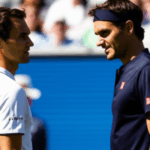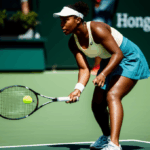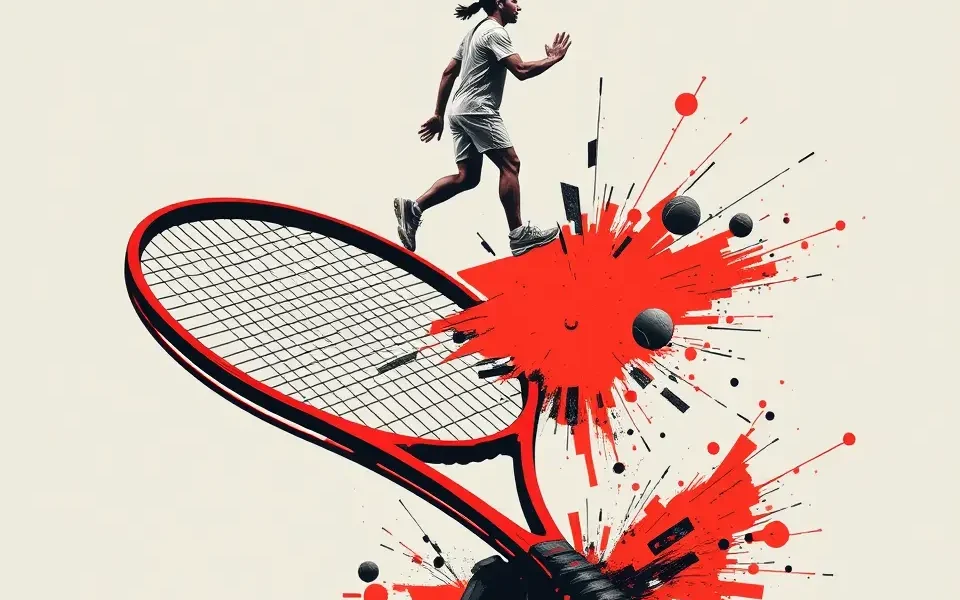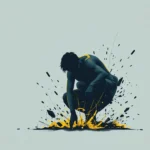Emma Raducanu, the British tennis sensation who captured the world’s attention with her improbable US Open victory in 2021, has since navigated a career marked by both immense promise and considerable turbulence. A significant aspect of her journey has been her frequent coaching changes, a topic that has drawn scrutiny and sparked debate within the tennis community. This article delves into the complexities surrounding Raducanu’s coaching situation, examining the perspectives of former players, analysts, and Raducanu herself, to provide a comprehensive understanding of this ongoing narrative.
The Coaching Carousel: A Timeline of Changes
Raducanu’s professional career, though relatively young, has been characterized by a high turnover of coaches. Here’s a look at the key figures who have guided her:
- Nigel Sears (2021): Sears was Raducanu’s coach when she made her breakthrough at Wimbledon in 2021, reaching the fourth round. They parted ways after this tournament.
- Andrew Richardson (2021): Richardson coached Raducanu during her historic US Open triumph. Despite the victory, their partnership ended shortly after the tournament.
- Torben Beltz (2021-2022): Beltz, a seasoned coach with experience working with top players like Angelique Kerber, joined Raducanu’s team in late 2021 but was let go in April 2022.
- Dimitry Tursunov (2022): Tursunov, known for his candid and direct approach, worked with Raducanu for a few months in 2022.
- Sebastian Sachs (2023): Sachs joined Raducanu’s team in early 2023, but their partnership was cut short due to Raducanu’s surgeries on both wrists and an ankle.
- Nick Cavaday (2024-2025): Raducanu reunited with her childhood coach, Nick Cavaday, in 2024, but Cavaday had to step away due to health reasons in January 2025.
- Vlado Platenik (2025): Platenik had a very brief trial period with Raducanu, lasting only one tournament.
- Mark Petchey (2025-Present): After working with Petchey on an informal basis, Raducanu seems set to continue working with Petchey.
Former World No. 9’s Perspective
While the identity of the former World No. 9 offering the “honest verdict” isn’t explicitly stated in the search results, the recurring theme revolves around the instability and potential hindrance caused by Raducanu’s frequent coaching changes. Many in the tennis world believe that a consistent coaching relationship is crucial for a player’s development and success. The constant changes can disrupt a player’s training regime, tactical approach, and overall confidence.
Raducanu’s Rationale: A Quest for the Right Fit
Raducanu herself has addressed the coaching changes, attributing them to her inquisitive nature and her need to understand the “why” behind the coaching instructions. She has stated that she asks her coaches a lot of questions and that, on occasion, they haven’t been able to keep up with her inquiries.
“It’s something I’ve always done. I keep provoking and asking questions to coaches and challenging their thinking as well. I’m not someone that you can just tell me what do and I’ll do it, I need to understand why and then I’ll do it.”
This suggests that Raducanu is actively seeking a coach who can engage with her intellectually, explain the reasoning behind their strategies, and adapt to her evolving needs.
Is Constant Change the New Normal?
Raducanu’s agent, Max Eisenbud, has offered a different perspective on the situation. He suggested that Raducanu’s frequent coaching changes might be a recurring theme throughout her career, stating, “It’s probably going to be like that for the rest of her career. That’s what’s comfortable for them.” He drew parallels to other successful father-daughter pairings in tennis, such as Richard Williams (Venus and Serena Williams) and Yuri Sharapova (Maria Sharapova), who had their own unique philosophies and approaches to coaching.
Eisenbud’s comments suggest that Raducanu and her team, particularly her father, Ian Raducanu, have a specific vision for her development that may not align with traditional coaching models. They may prefer a more flexible and adaptable approach, where coaches are brought in for specific periods or to address particular areas of her game.
The Impact of Injuries and Off-Court Demands
It’s important to consider the other factors that have influenced Raducanu’s career trajectory and coaching decisions. Injuries have been a persistent issue, disrupting her training and forcing her to withdraw from tournaments. In 2023, she underwent surgeries on both wrists and an ankle, sidelining her for a significant portion of the season.
Raducanu’s sudden rise to fame after the US Open also brought a whirlwind of off-court demands, including endorsement deals, media appearances, and other commercial obligations. She has admitted that these commitments sometimes took a toll on her energy and focus, potentially affecting her on-court performance and her relationships with her coaches.
Recent Developments: Mark Petchey and a Potential Turning Point
In recent months, Raducanu has been working with Mark Petchey, a former British professional player and coach who has previously worked with Andy Murray. Petchey was part of Raducanu’s team at the Miami Open in March 2025, where she achieved her best result of the year, reaching the quarter-finals.
Raducanu has spoken positively about her work with Petchey, describing him as someone she gets along with well and with whom she has “very thought-provoking, interesting conversations.” While their partnership is still described as “informal,” there are indications that Petchey could become a more permanent fixture in Raducanu’s team.
The Quest for Consistency and Stability
Despite the challenges and changes, Raducanu remains focused on her goals and determined to achieve sustained success in tennis. She has acknowledged the need for consistency and stability in her team, and her recent work with Petchey suggests that she may be moving in that direction.
Raducanu’s journey is a testament to the complexities of professional tennis, where talent, hard work, and mental resilience are essential, but finding the right support system is equally crucial. Whether she ultimately finds a long-term coaching solution or continues to embrace a more unconventional approach remains to be seen. However, one thing is certain: Emma Raducanu’s story will continue to captivate and inspire tennis fans around the world.
Raducanu’s Training and Fitness
Raducanu’s training routine is intense. A typical day involves:
- Physio: Muscle activation work to warm up the body.
- Warm-up: 30 minutes
- On-court practice: 90 minutes, followed by lunch, and another 2 hours in the afternoon.
- Gym Session: One hour
- Treatment: One hour to keep the body in shape.
- Yoga: To maintain flexibility.
She also emphasizes the importance of sleep, aiming for at least eight hours a night, and snacks frequently during training to maintain energy levels. In 2025 Raducanu has worked with fitness coach Yutaka Nakamura, who has worked with Maria Sharapova and Naomi Osaka.
Raducanu’s Weight Loss
In 2025, it was reported that Raducanu lost approximately 11 pounds, going from 121 lbs to 110 lbs. This was achieved through dedication and discipline, focusing on building sustainable habits rather than fad diets or punishing workouts. She worked with Jez Green, Andy Murray’s former fitness coach, and incorporated:
- Compound Movements: Squats, deadlifts, and bench presses to build core strength.
- Plyometrics and Agility Drills: To enhance her explosive power on the court.
- High-Intensity Interval Training (HIIT): Short bursts of effort followed by rest periods to burn fat.
- Balanced Diet: Rich in lean proteins, complex carbohydrates, healthy fats, and plenty of vegetables.
A Look Ahead: Madrid Open and Beyond
As of April 2025, Raducanu is competing at the Madrid Open. She has been working with Mark Petchey, and their partnership seems to be yielding positive results. Raducanu has acknowledged that she is still learning to find her feet on clay courts.








No Comment! Be the first one.